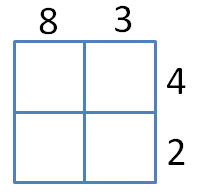Learning Japanese and Mathematics Simultaneously
I studied in Japan in a Teacher Training Program for one and a half years. A 4-month intensive Japanese language course was included in this program, so I was really lucky since I wanted to learn Japanese. Like many of you, I was a fan of Japanese anime since I was a kid.
The Intensive Japanese Language Course
For the first four months in the program, I, together with other international students, studied Japanese 5 hours a day, 5 days a week. We learned grammar, listening, speaking, and writing. As you probably know, writing is the hardest part since Japan uses a different writing system. They use three sets of characters namely, Hiragana, Katakana, Kanji, and they also know our alphabet. After graduating high school, Japanese students should master 46 Hiragana, 46 Katakana, and 2136 Kanji characters.
In our case, after four months of training, we learned around 400 Kanji characters. Although I had the chance to continue our Japanese language studies, I did not. I focused on my research and studied Japanese on my own. » Read more

